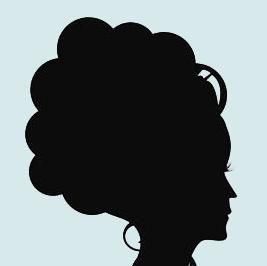洗发水:你知道每个成分的作用吗?
|
爱思英语编者按:据一份2008年由英国明泰尔市场调查公司开展的调查报道,一半的成人感到洗发水和护发素的种类繁多,让人眼花缭乱。潘婷作为洗发水类中的龙头老大,旗下就有14种以不同功效为主题的系列,总共113种产品。不难看出洗发水的货架上挤满了不同洗发水产品,让人不知从何下手。但是这些洗发水的成分到底是什么,它们有什么作用呢?我们就对写在洗发水瓶子后面的成分细细分门别类吧。 There’s no shame in admitting that your hair affects your mood. According to a Dove Hair Care survey, one out of every four women has avoided an activity due to unruly hair and 88 percent say good hair boosts their confidence. So for many women, a trip to the shampoo aisle is a much more serious purchase than stocking up on toothpaste and Q-tips. A 2008 study from market research firm Mintel reported that half of adults find the variety of shampoos and conditioners overwhelming. When Pantene, the shampoo category leader, offers 113 products in 14 different benefit-themed lines, it’s easy to see how the shelves have become so crowded—and confusing. The good news? The majority of those options boil down to different packaging. “All shampoo is essentially a cleanser,” says Paula Begoun, author of Beautypedia.com. “Only the first five or six ingredients impact the formula’s effectiveness.” And if you do a quick survey of a few shampoo ingredients labels, you’ll quickly see how the top 10 list looks nearly the same on all of them. But what are those ingredients, and what do they do? We broke down the ingredients on the back of the bottle. 1. Water. Up to 80 percent of shampoo is this basic element. Without enough of it, the lathering liquid wouldn’t pour from the bottle. 2. Surfactant. Basically a detergent, this additive does the bulk of the work. Surfates clean by surrounding dirt and oil so water can rinse them away. Ingredients like ammonium lauryl sulfate and ammonium laureth sulfate tend to be easier on sensitive scalps than sodium lauryl sulfate. Rumors that these chemicals can cause cancer are unfounded. While surfactants are irritating, shampoos don't contain high-enough levels to cause any real damage. Surfactants aren’t a problem unless you have sensitive skin or insist on regularly pouring gallons of the stuff in your eyes. And the cleansers shouldn’t be harmful to your hair. The shampoos sold today contain conditioners that compensate for the stripping qualities of surfactants, so you can wash daily without worry. 3. Foaming agents. Ingredients like cocamide or cocamidopropyl betaine provide the satisfying suds that complete the hair-washing experience. Lather, however, is purely aesthetic. “Lather doesn’t have anything to do with how well a shampoo works,” says Ni’Kita Wilson, a cosmetics chemist for Cosmetech Laboratories. “Manufacturers put lathering agents in shampoos because it’s what consumers expect.” 更多信息请访问:http://www.engbus.cn/ 4. An acidic ingredient. Items like sodium citrate or citric acid on your shampoo label are added to keep shampoo at the right pH level. The acidic pH interacts with the hair's slightly negative charge to help the cuticle, the outer layer of the hair, maintain a smooth, flat surface. 5. Silicones like dimethicone, or anything ending in 'one.' These are polymers that deposit a lightweight coating on the hair. They help create smoothness and add shine. 6. Polyquaternium. Much like a fabric softener, it helps make hair more manageable by depositing a fatty conditioner and fighting static. It also thickens the shampoo formula so it’s easier to pour. 7. Panthenol, fatty alcohols, and nut oils. These common additives moisturize and lock in hydration. 8. Midazolidinyl urea, iodopropynyl, isothiazolinone, and sodium benzoate. “Unless you want your shampoo to grow legs and walk away, you need preservatives,” Wilson says. Since many of the other ingredients are made from organic materials, they can grow mold and bacteria. These additives keep your shampoo from turning into a science project. 更多信息请访问:http://www.engbus.cn/ “Most often, the ingredients lower down on the list aren’t present in high-enough concentrations to have any impact on the shampoo’s performance,” Begoun says. Natural extracts and other additives that manufacturers brag about on the label don’t do much for your hair, but they might make the experience more enjoyable by adding a little color or fragrance to the process. Of course, judging by the number of women (and men) sniffing shampoo in the personal-care aisle of the drugstore, fragrance is a big part of the shampoo equation. To wit: the phenomenon that was Gee, Your Hair Smells Terrific. So if all of these ingredients are basically the same, why are some shampoos more expensive? Good question. Price rarely is an indicator of performance. “There’s no reason at all to pay more than $7 for a bottle of shampoo,” Begoun says. In fact, when Consumer Reports tested 1,700 ponytail samples by washing them in a range of shampoos, the expensive options did not produce any better results than the drugstore brands. You won’t see 10 times more results with a $30 bottle over a $3 bottle. “The only way to find out if a shampoo will work for you is by using it,” Wilson says. “Nothing on the bottle, including the price tag, can tell you if you’re really going to like the results.” If you rely on a high-priced brand to ensure a good hair day, you could be sending money down the drain. Instead of shopping by price, Begoun suggests this strategy to help find the best formula for your hair: your shampoo, she says, should treat your scalp and your conditioner should treat the bottom few inches of your hair. So if you have an oily scalp and split ends, a shampoo formulated for oily hair will remove grease, and a repairing conditioner will help protect the ends. If that fails? Well, there's always a headband. |









